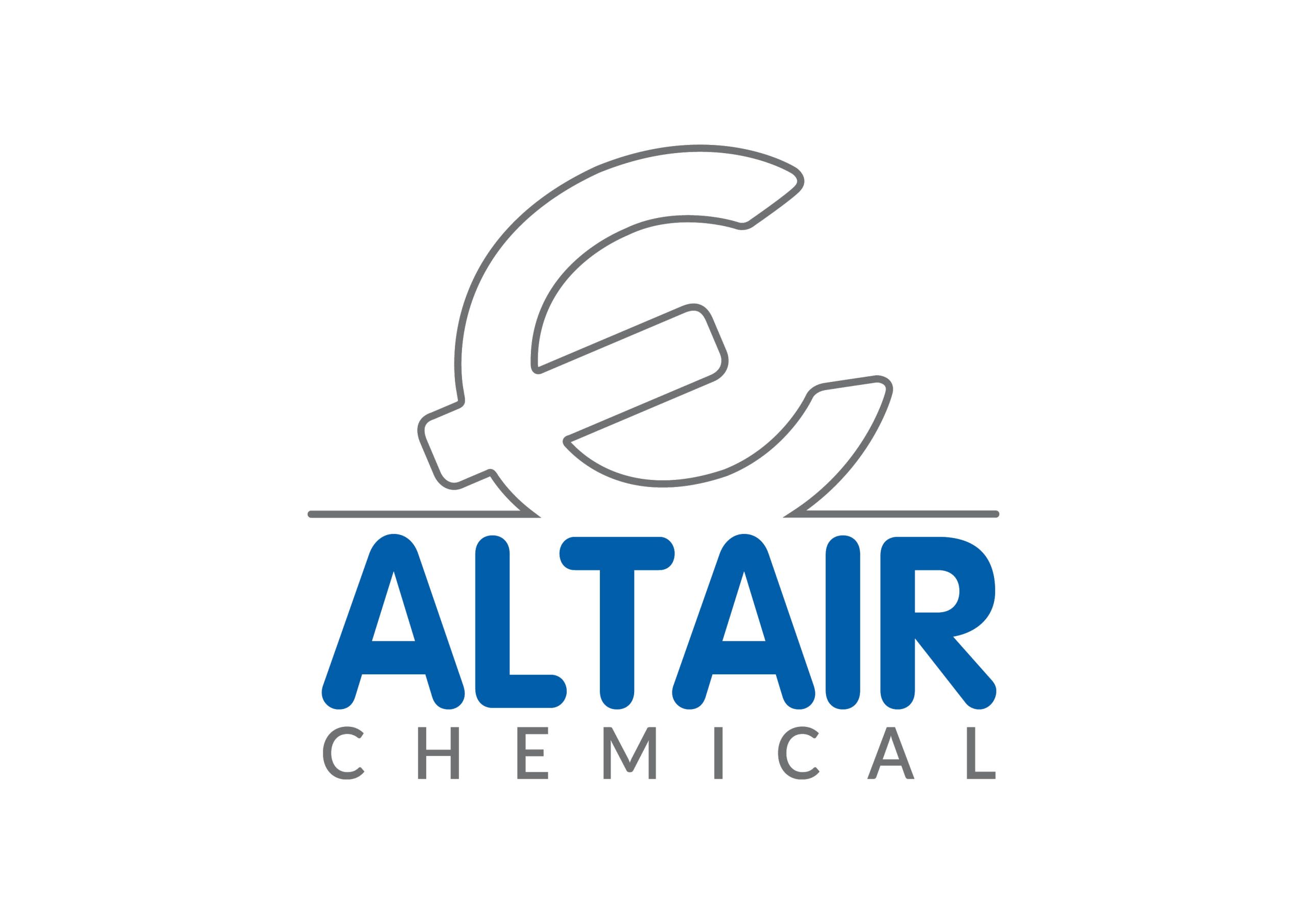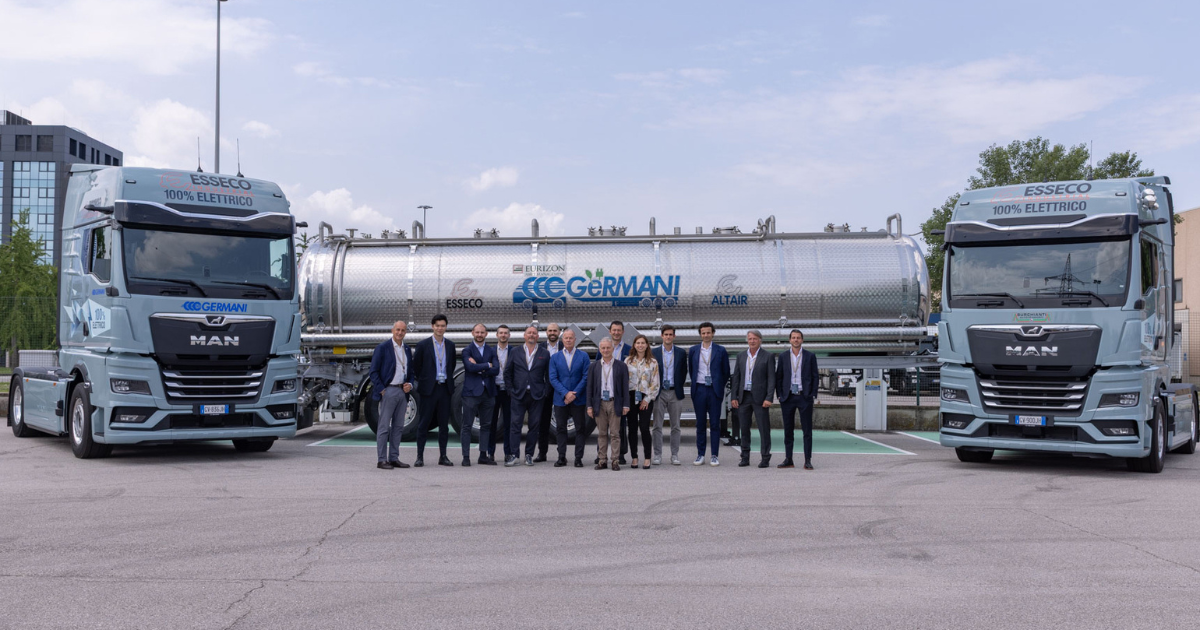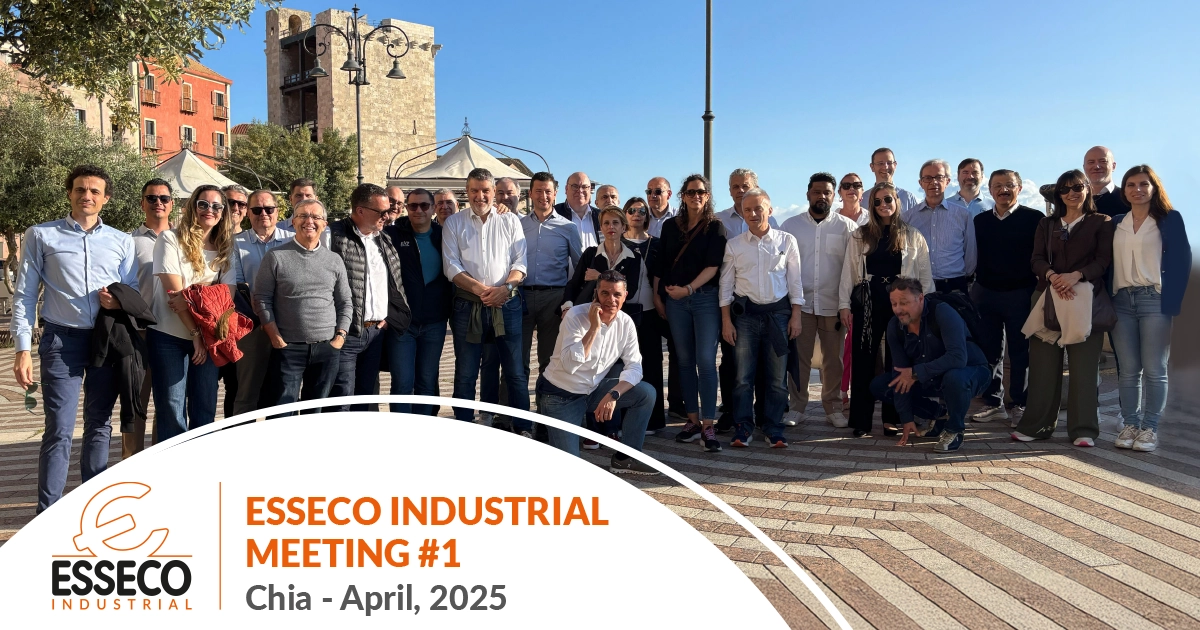June 10, 2025 The photography exhibition titled “Saline di Volterra, a Presidential Inauguration (1959)” was…
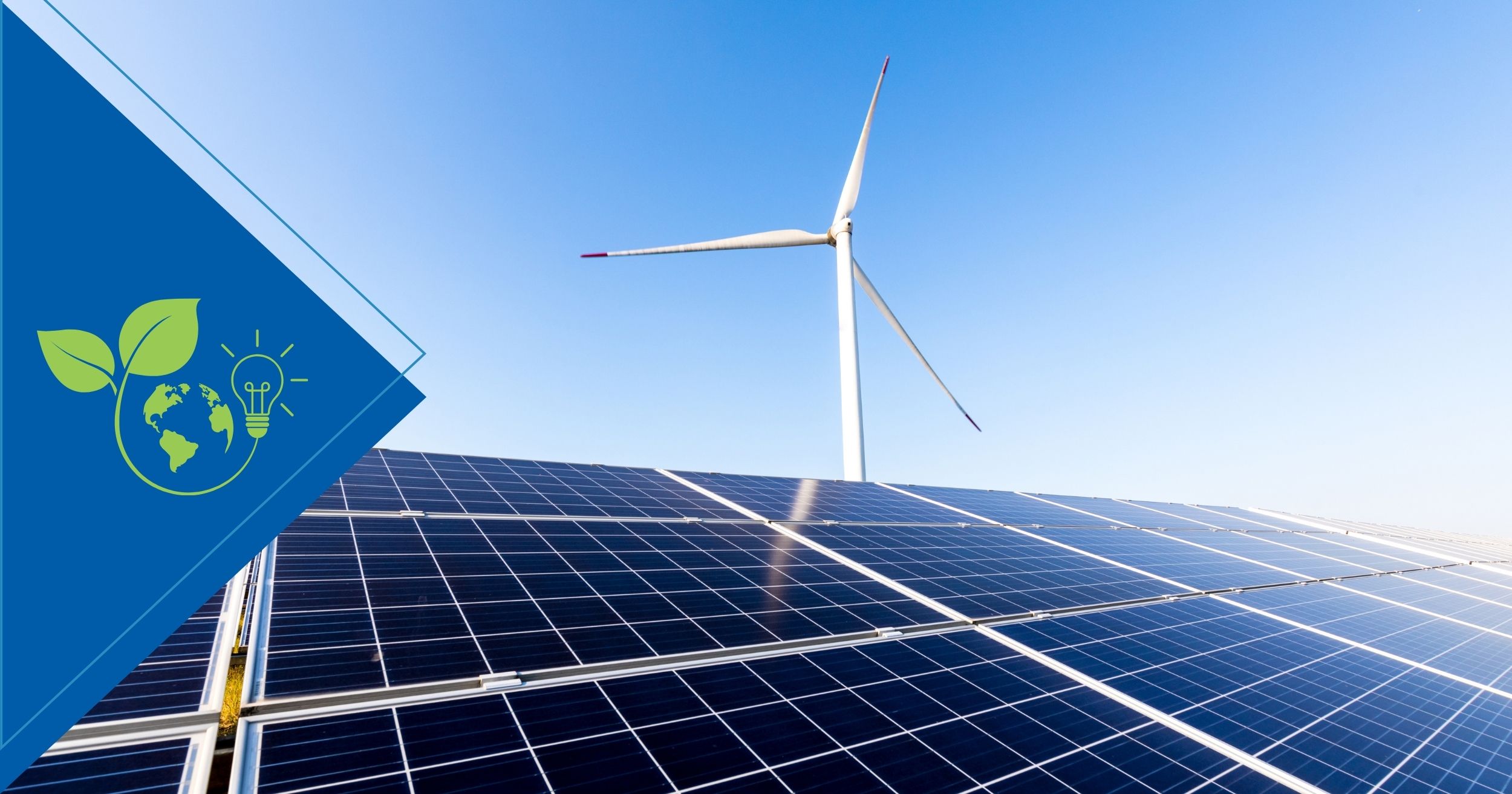
The long journey towards sustainable chemistry cannot disregard, firstly, the reduction of consumption and the efforts made in the context of the energy transition.
Chemistry is, in fact, an energy-intensive sector par excellence, so much so that it is defined as “hard-to-abate” due to its characteristics, which involve transforming matter to obtain substances and products which are essential for our everyday life.
According to Federchimica data, electricity currently represents for about 35% of the chemical industry’s energy consumption, 29%, of heat, 27% of natural gas, 7% of liquid fuels (gasoline, diesel, fuel oil, LPG), and just the remaining 4% of energy from renewable sources and non-renewable waste.
In such a complex scenario, which requires 10 billion euros in research and development to develop alternative solutions (Boston Consulting Group, 2021), Esseco Industrial has made a series of efforts and investments that allow to exceed 55% of CO2-free energy. This percentage reaches 78% in Hydrochem.
How have we achieved these results? In our plants, we use various zero-emission sources to generate electric power: hydroelectric, photovoltaic, process steam, and cogeneration systems.
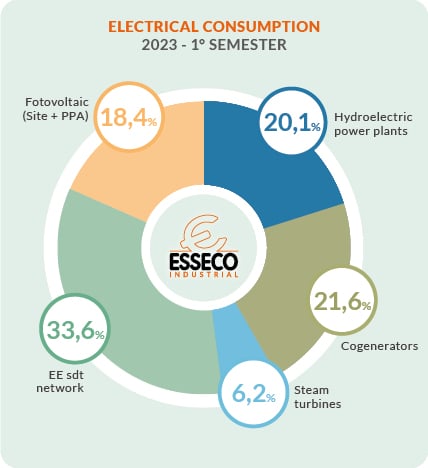
The two hydroelectric power plants owned by Esseco Industrial supply the productions of the industrial plant in Pieve Vergonte-Hydrochem: the energy needs of the facility are met by approximately 65,000 MWh per year, resulting in renewable energy reaching 78% here. Out of the total for Esseco Industrial, in the first half of 2023, hydroelectric energy accounted for a total of 20.1%.
Significant importance is also attributed to the photovoltaic source, both through installations present in our production sites and through long-term Power Purchase Agreements (PPAs), as well as through substantial investments in the first community of renewable energy consumers. The internal production, currently at 350 MWh/year thanks to two installations at the Saline di Volterra-Altair plant, will increase in the coming months to a total of 1,110 MWh/year, the result of two new installations. However, what makes the difference is the PPA contract called “Green by Axpo”, which started in July 2022 and is capable of guaranteeing a supply of 43,800 MWh/year for Altair. The percentage of photovoltaic impact on the overall consumption of Esseco Industrial has thus jumped from 0.1% in 2021 to 18.4% in the first half of 2023. This percentage is soon expected to rise further with the commissioning of the installations related to the Renewability project, on which 10.7 million euros have been invested. This innovative model allows the company to become a “prosumer” (producer becomes a consumer) and makes it independent from the electricity market, ensuring a cost-reflective price from a renewable source, supporting the investments of the installations: one of 2,688 MWh/year in Sicily for Esseco and an additional one for Altair of 12,000 MWh/year in Lazio and Abruzzo, which will together lead to a reduction of over 3,700 tons of CO2 per year.
Steam also plays a role in the production processes of Esseco Industrial, contributing 6.2% with CO2-free energy. By recovering the heat released in the sulfur combustion process, we are able to operate two steam turbines for a total of 6.74 MWe in Esseco.
Another significant portion of our “energy pie” is constituted by cogenerators (21.6%). Cogeneration plants are present in both the San Martino di Trecate-Esseco and the Saline di Volterra-Altair plants, where we also use 25% of the CO2 present in the exhaust gases to produce potassium carbonate K2CO3.
This energy mix allows us to have, ultimately, over 65% of self-produced energy, over 55% of CO2-free energy thanks to renewable sources and process steam, and over 50% of total green energy, considering that 38% of grid energy is produced from renewable energy sources (Ispra data, 2021).
Despite the significant increase in production, the energy mix of Esseco Industrial companies has seen a significant growth in the share of renewable energies: it is worth noting that in 2019, CO2-free energy accounted for only 42%, whereas today it exceeds 55% of the total. This achievement was reached through forward-thinking investment choices on PPA contracts, which paid off well during the energy crisis period caused by the Russo-Ukrainian conflict, and by the acquisition of the Hydrochem company in 2019, which owns two hydroelectric plants.
This is a determined step towards an increasingly sustainable chemistry capable of truly leading a real energy transition, in a sector so complex that it is defined as hard-to-abate. Projects in progress and green investments will continue in the short term with the ultimate goal of achieving energy autonomy and zero CO2 emissions by the year 2050.
